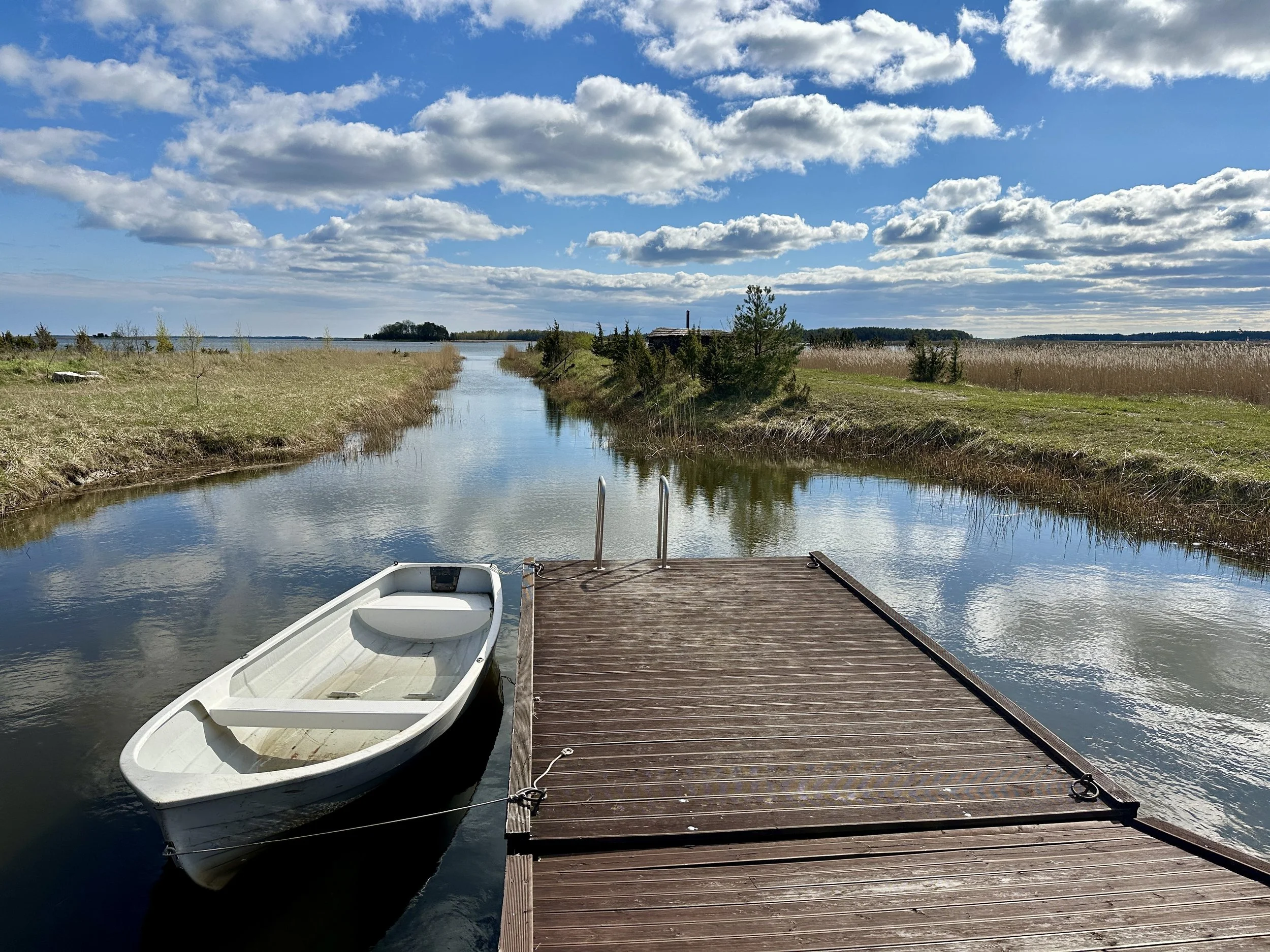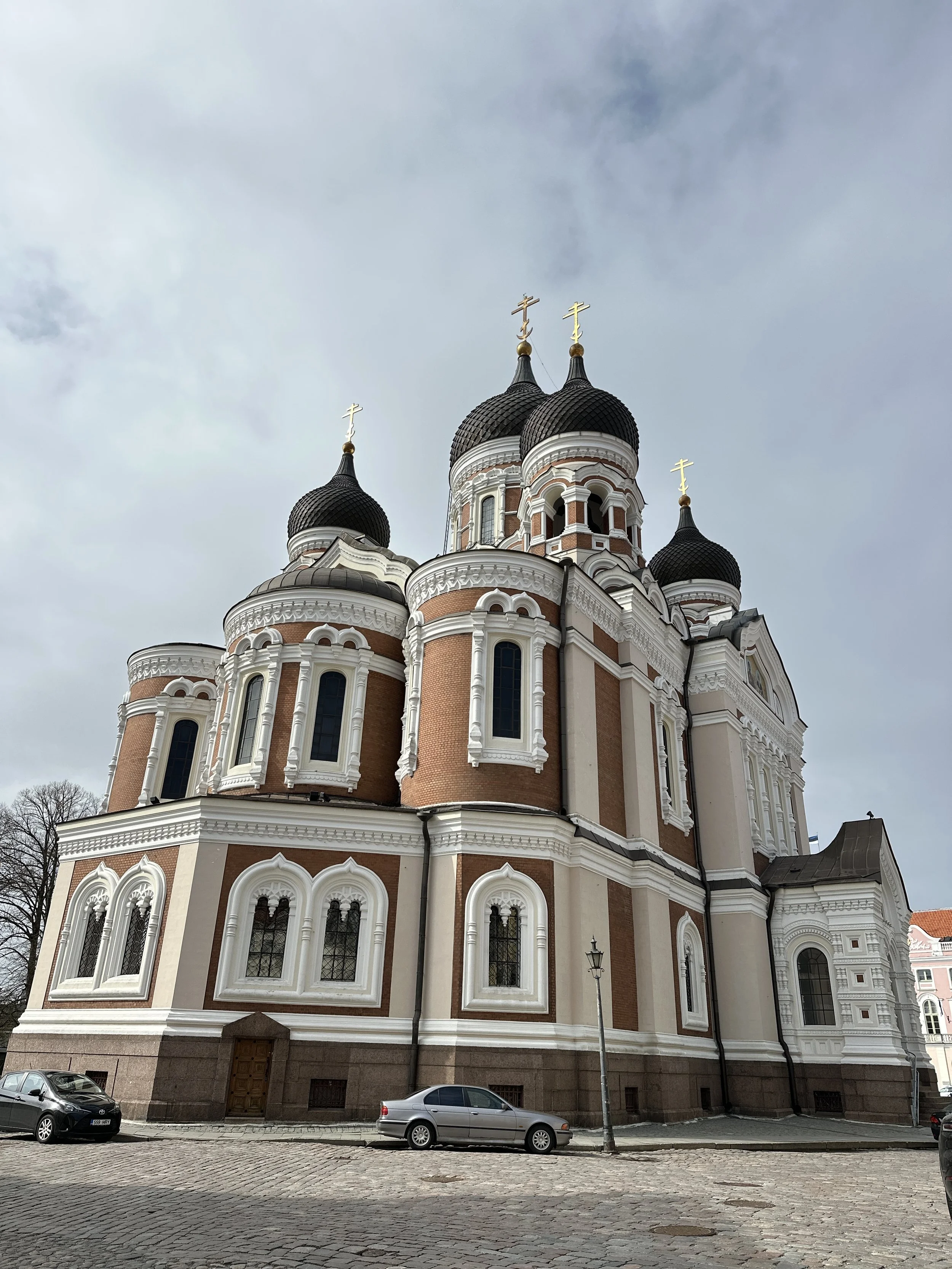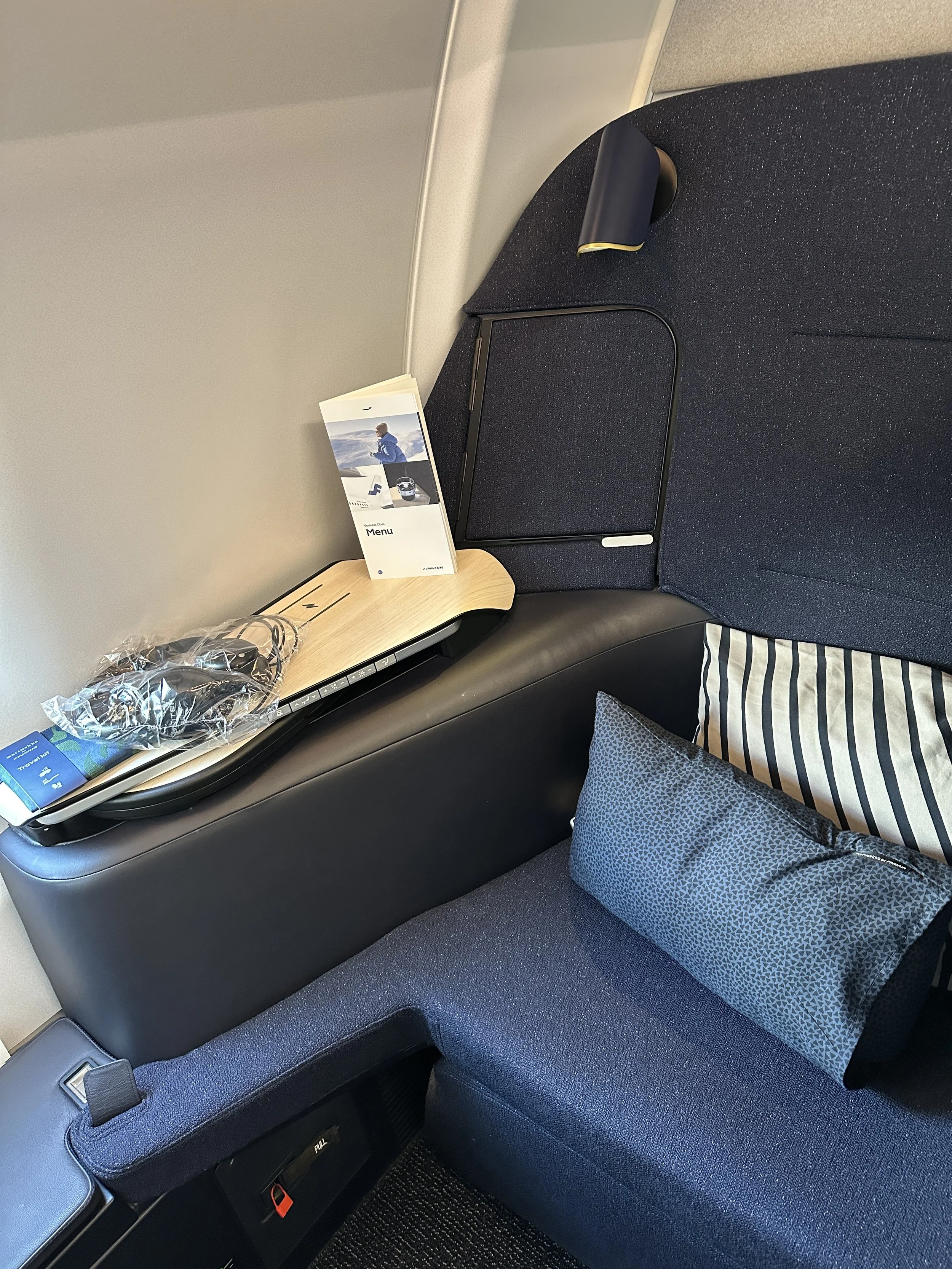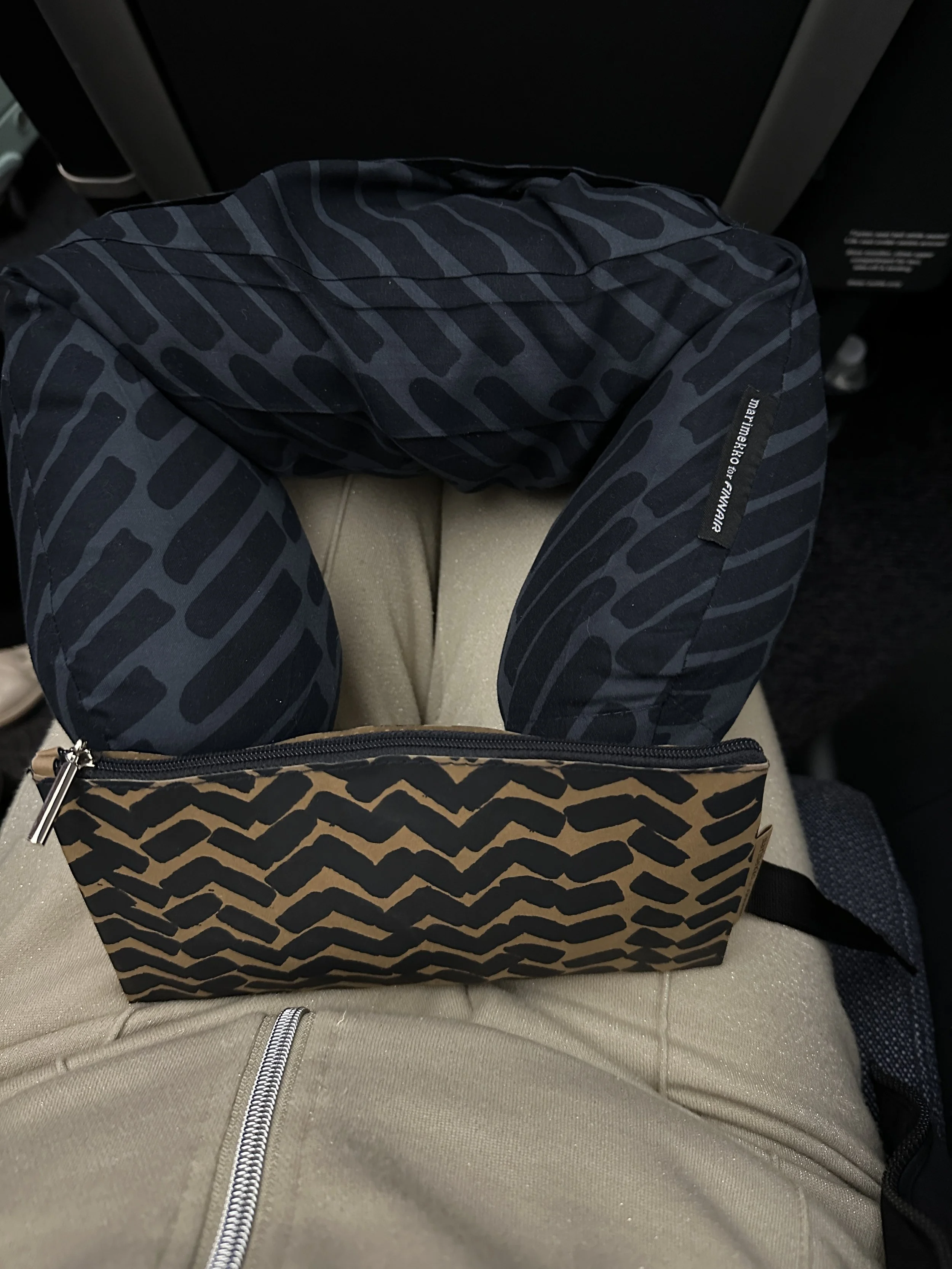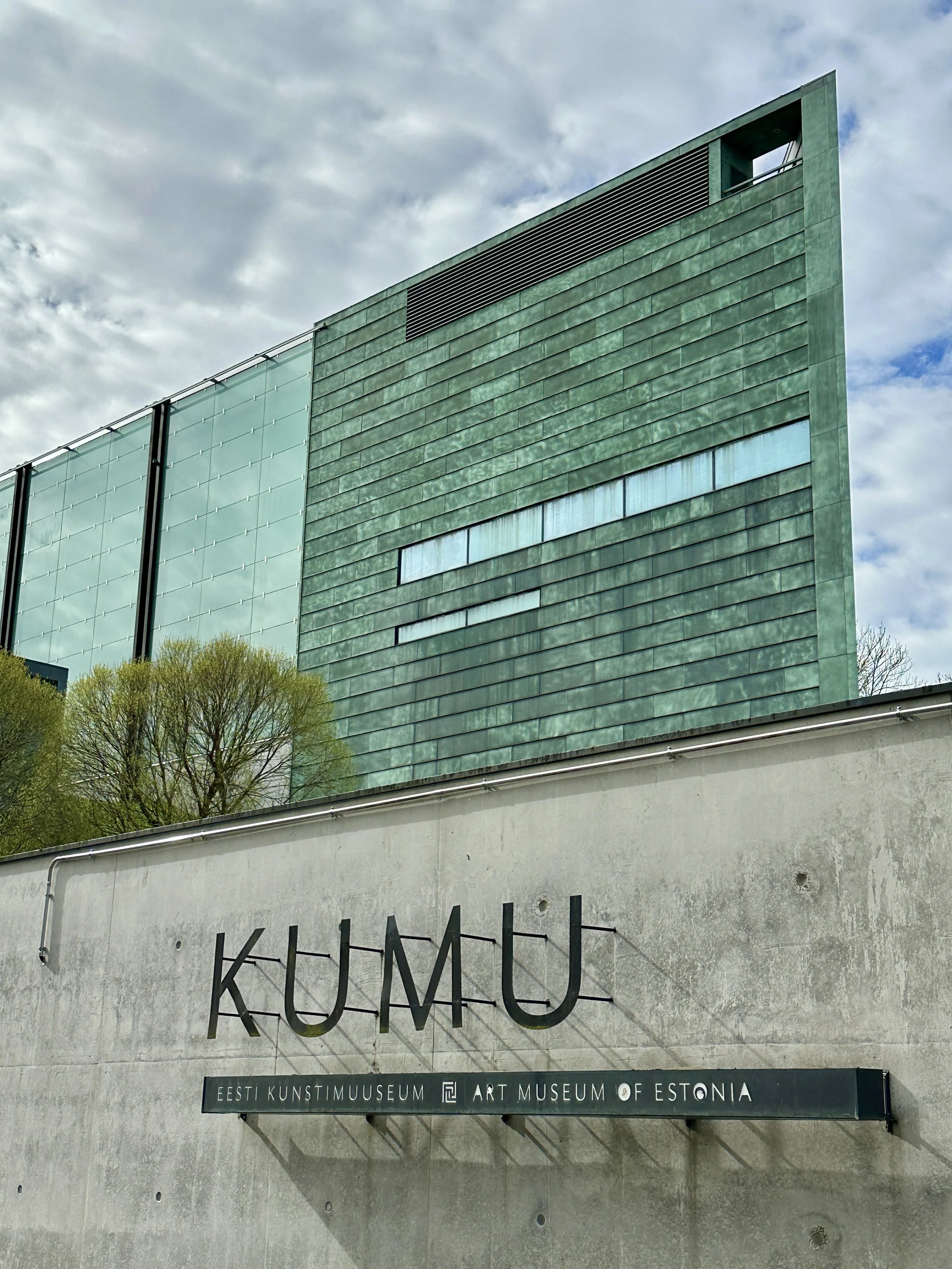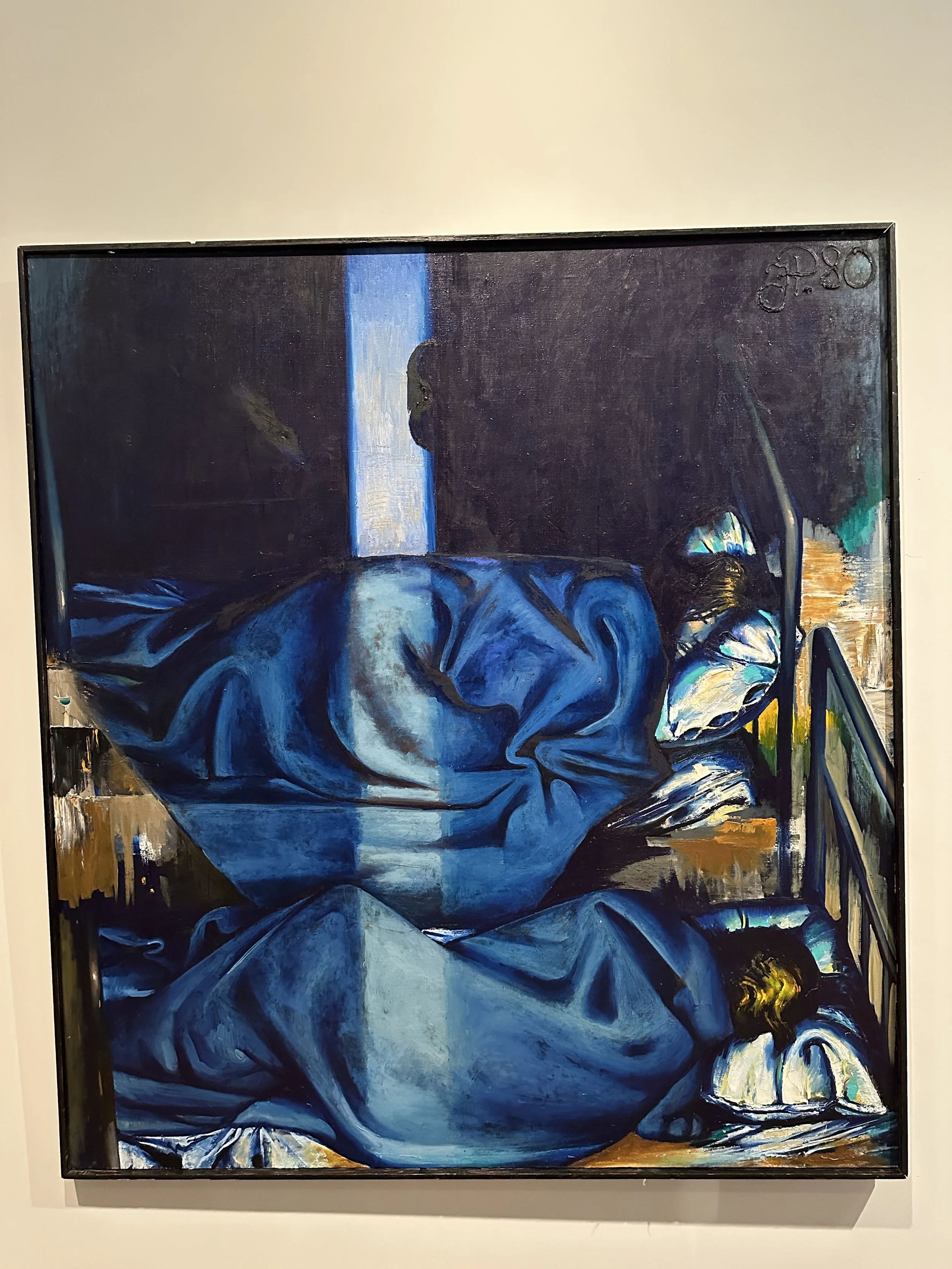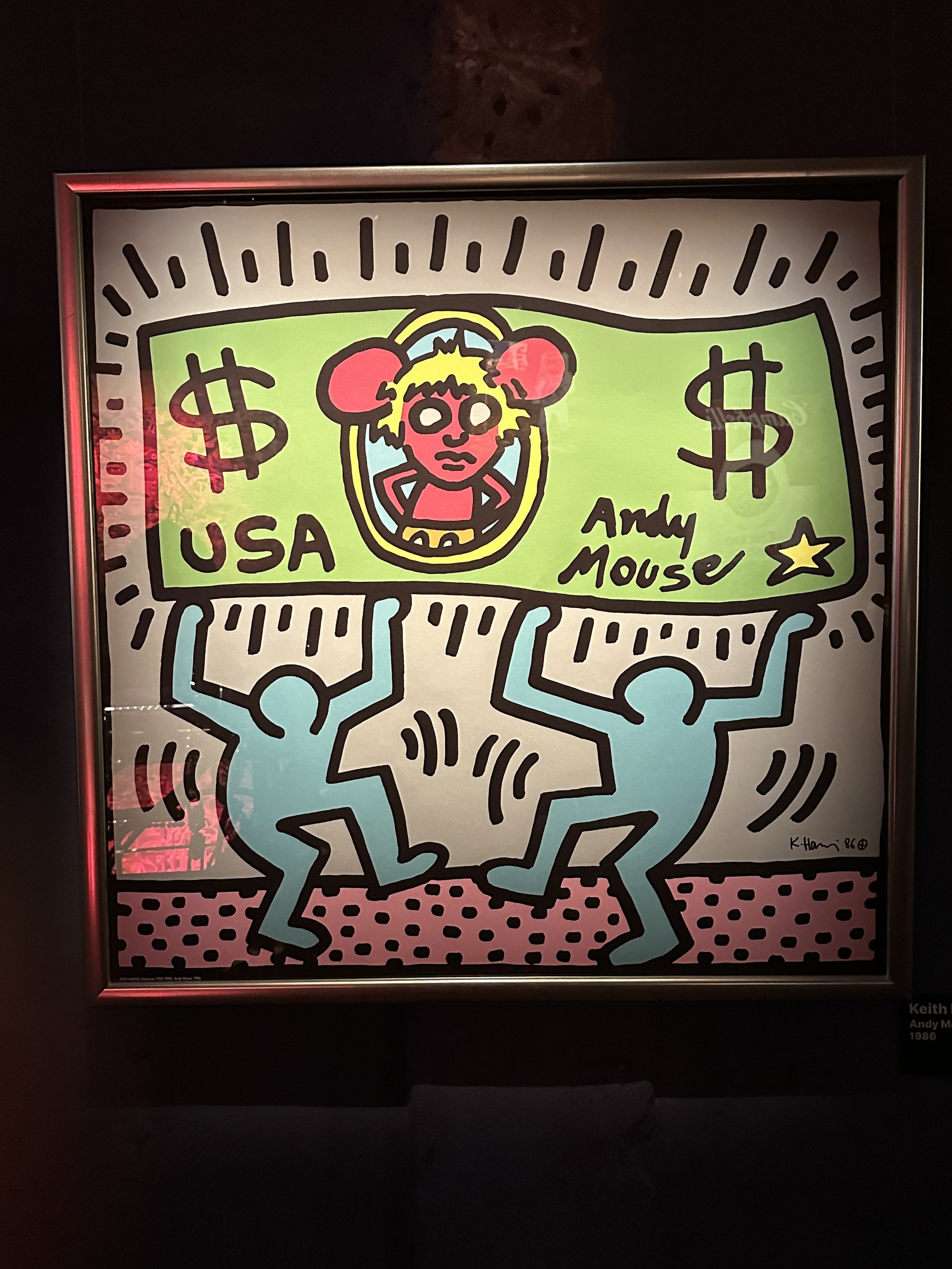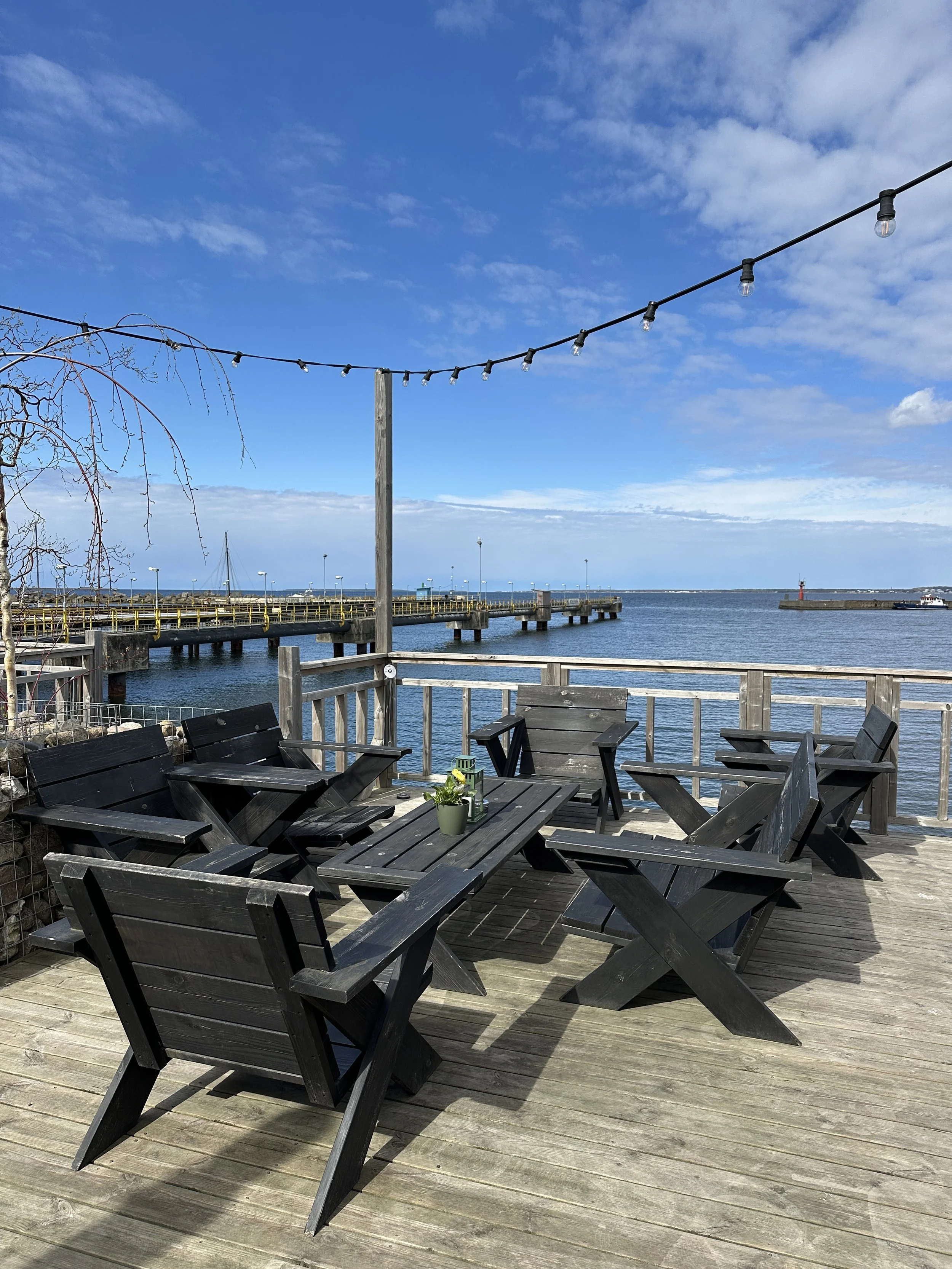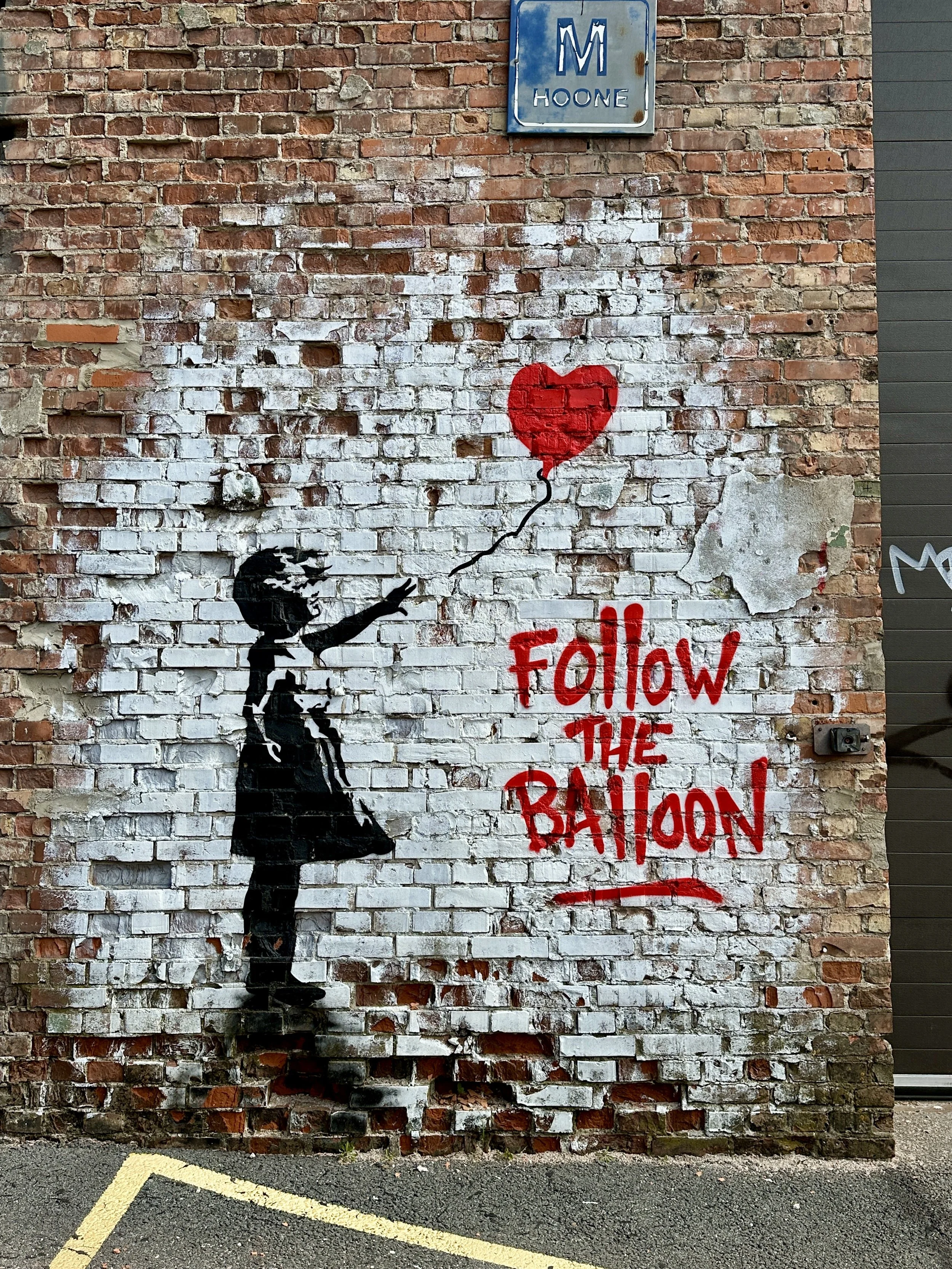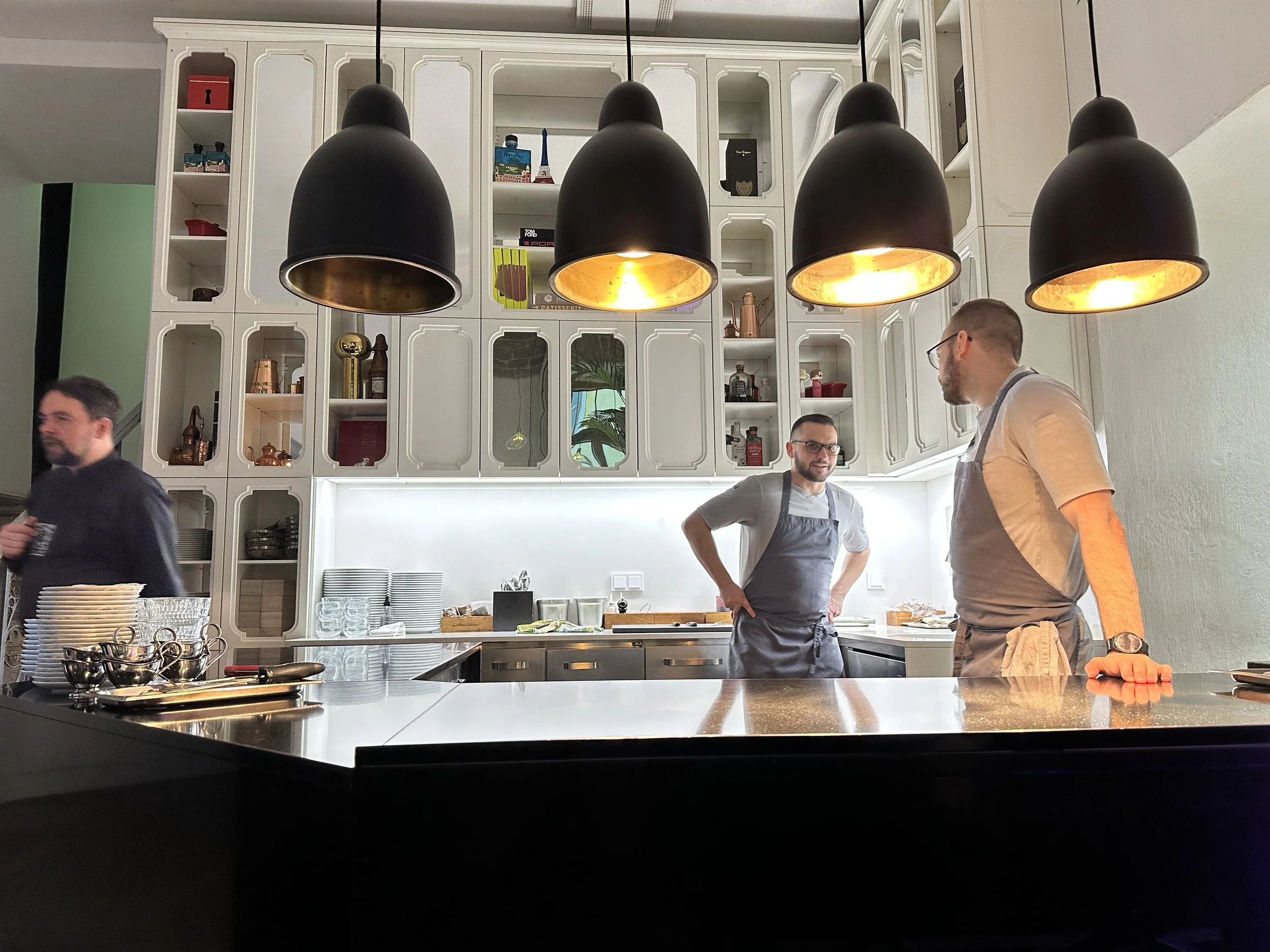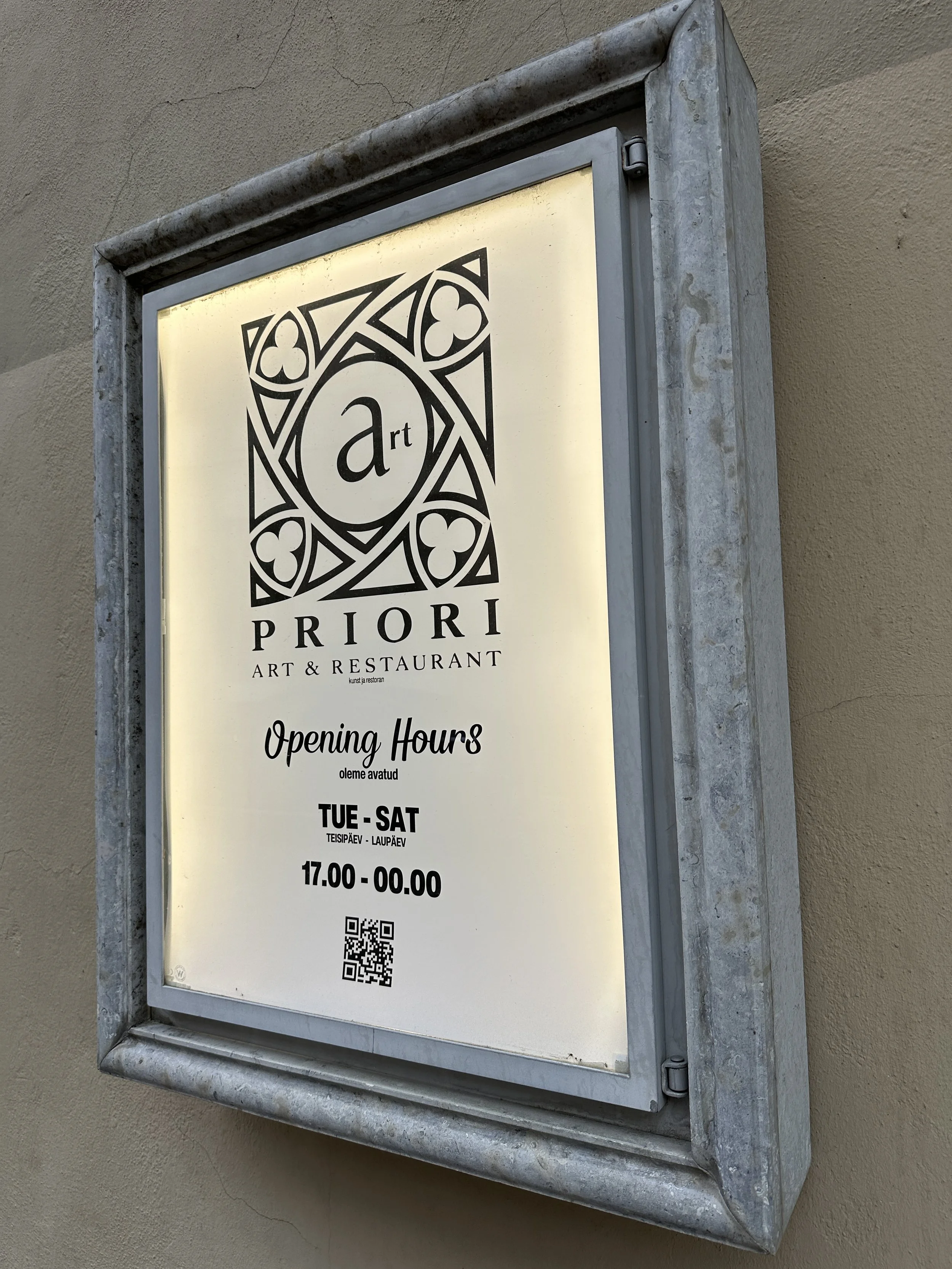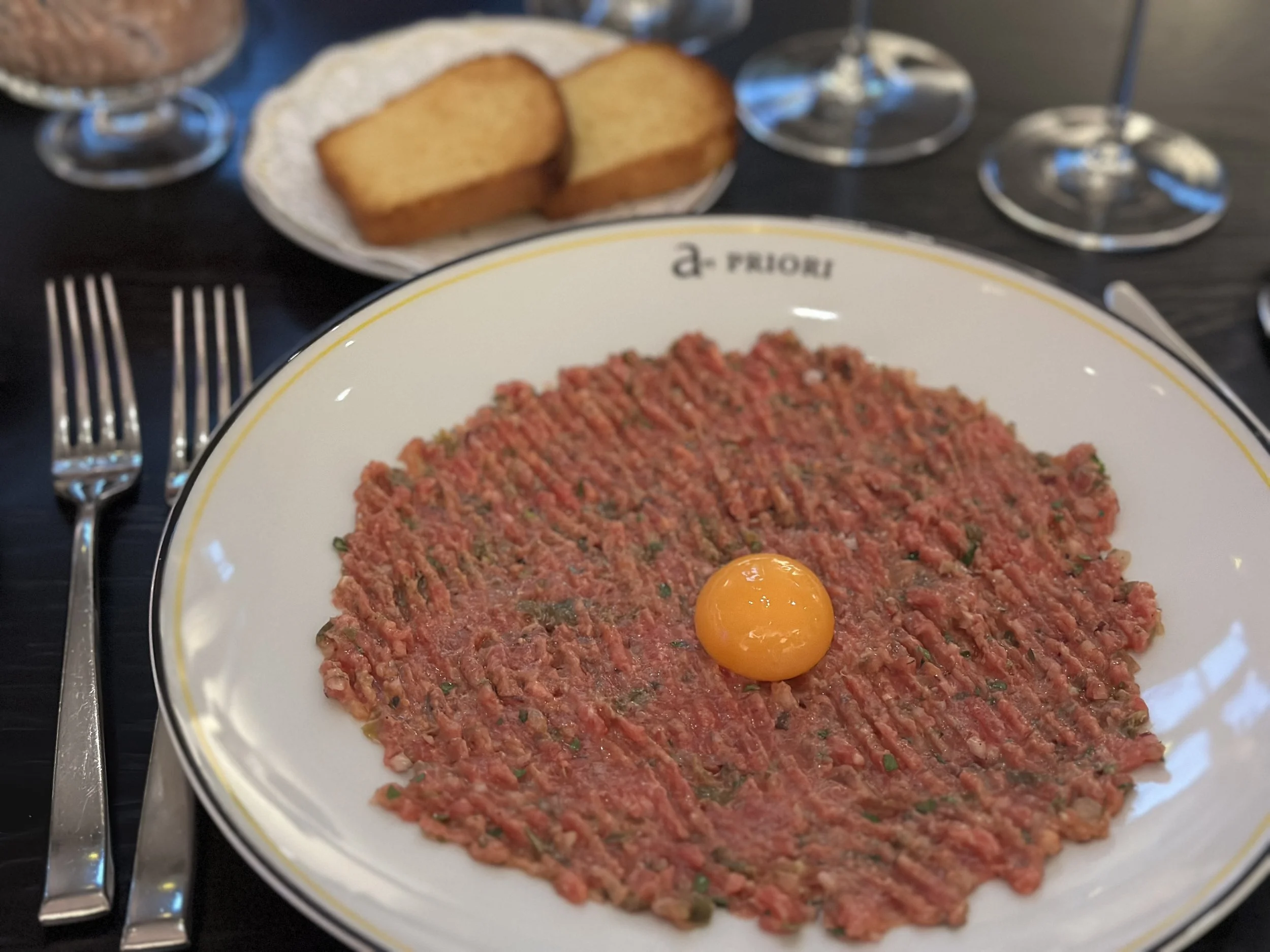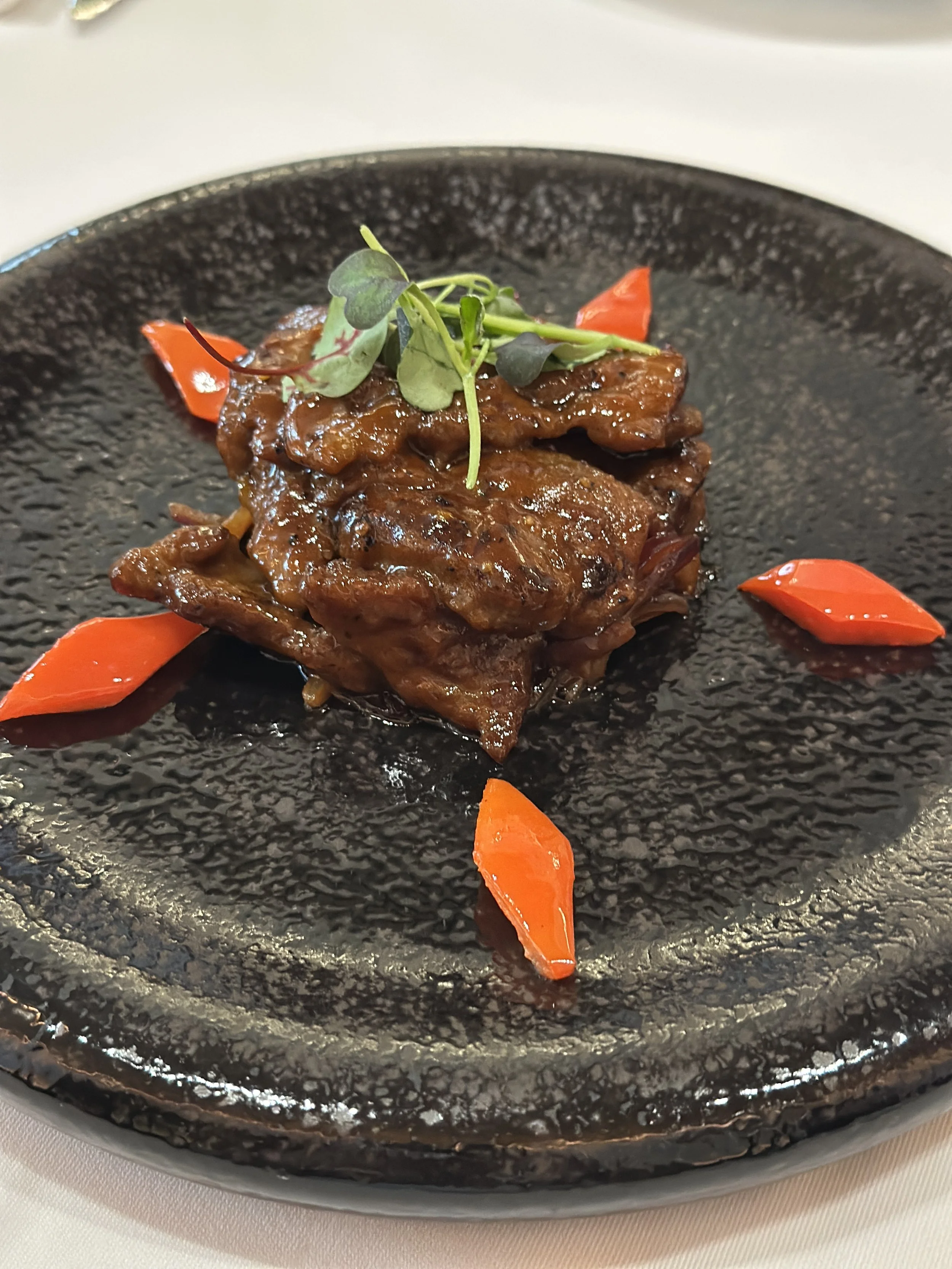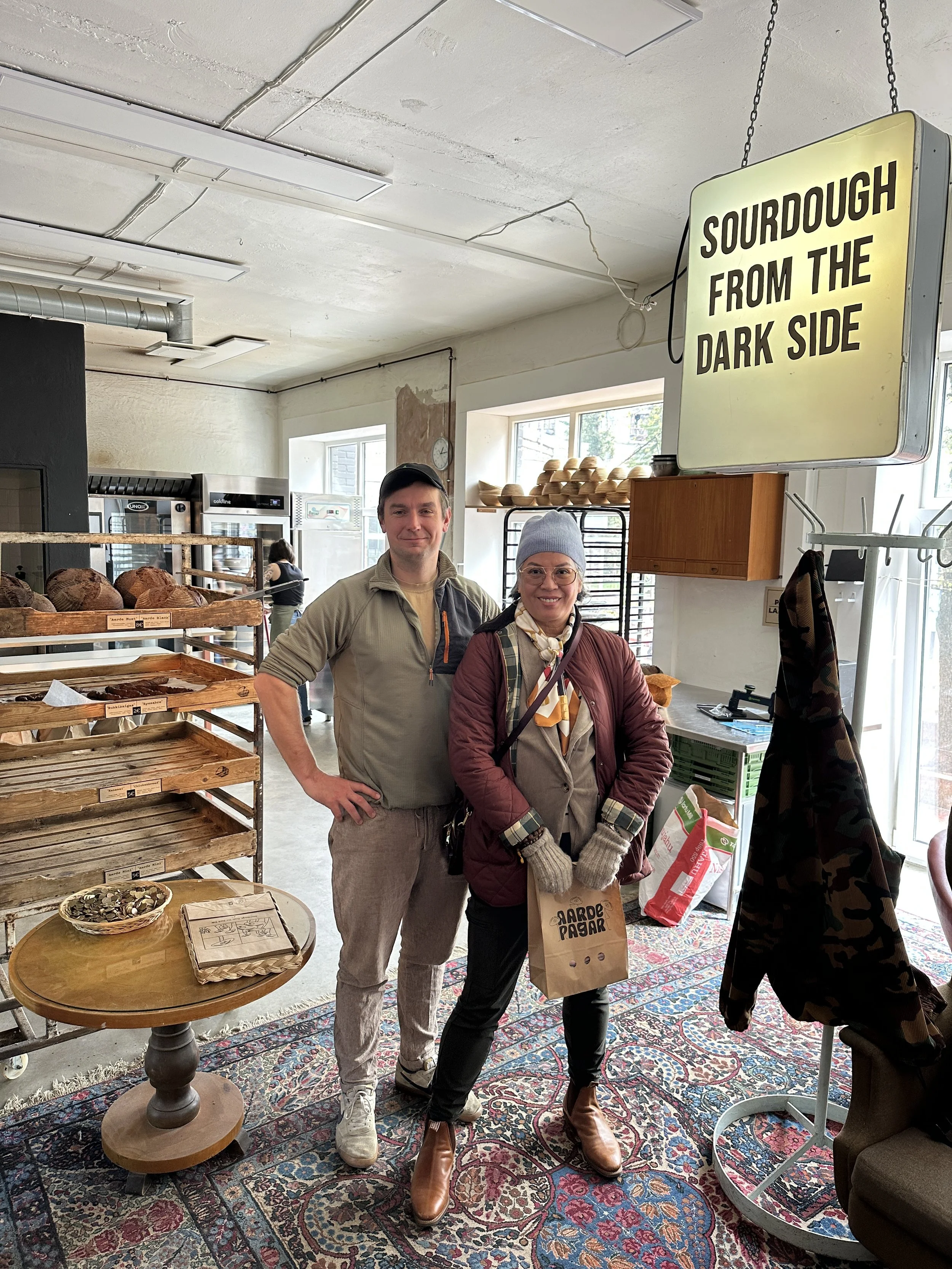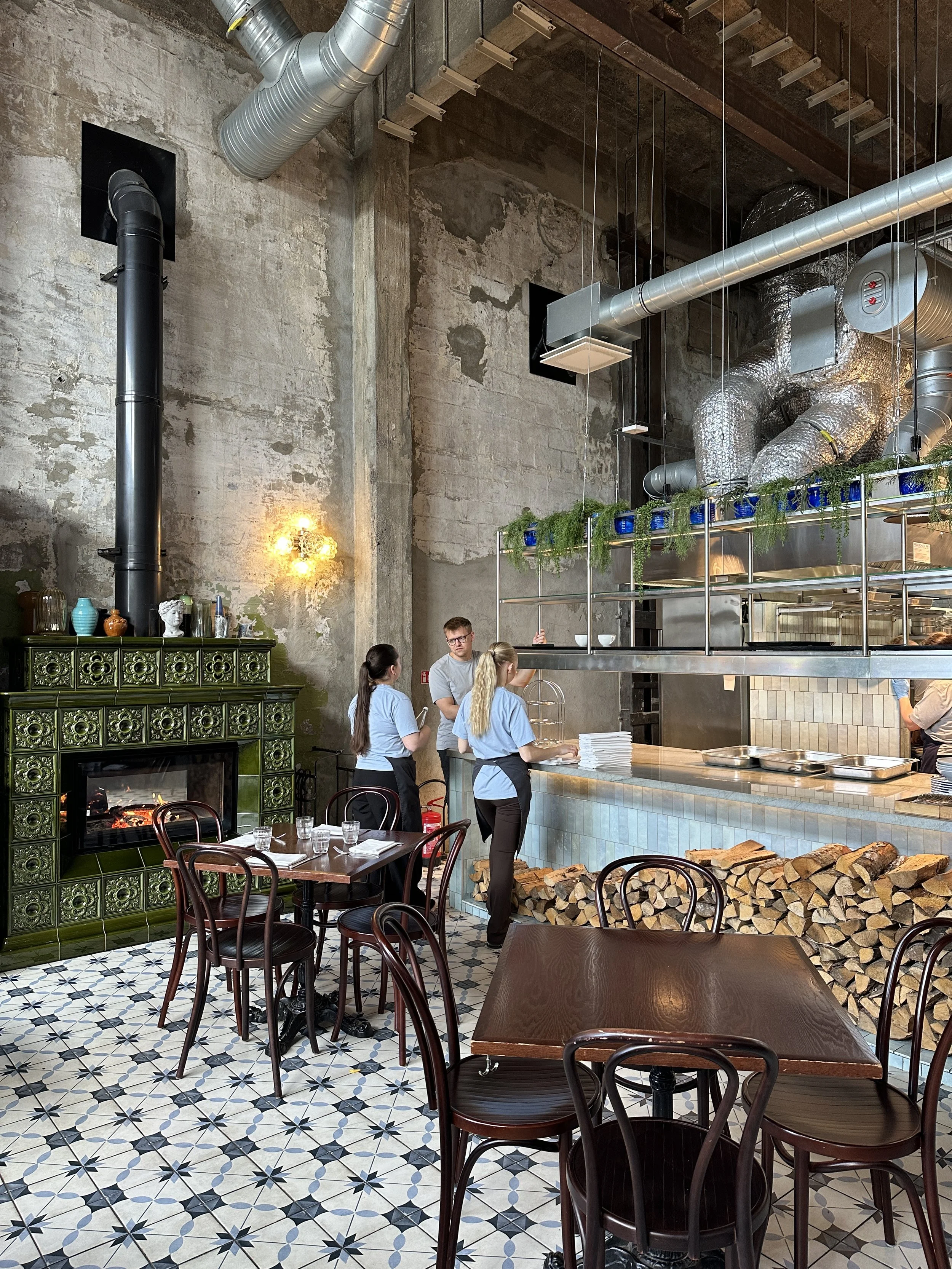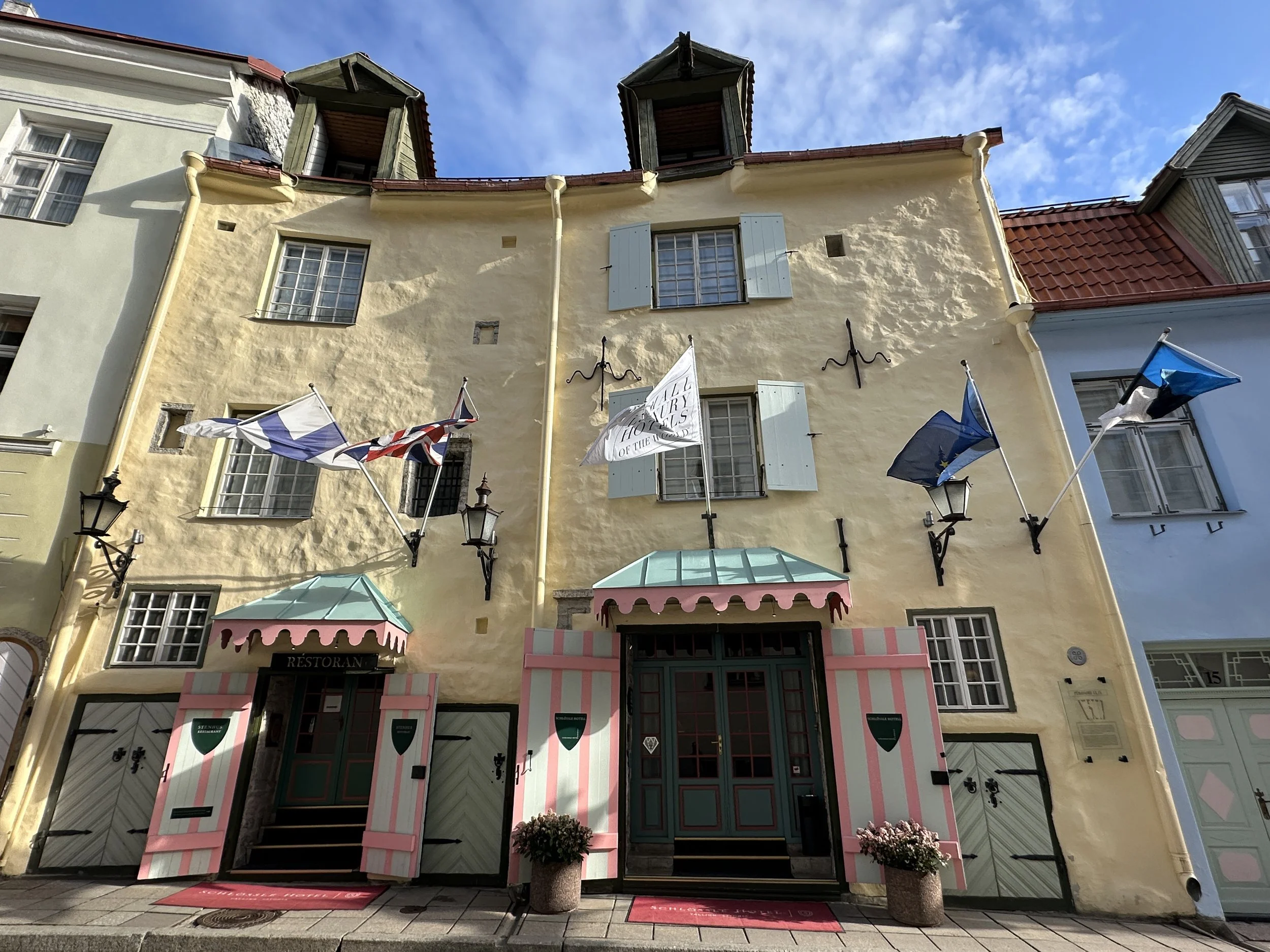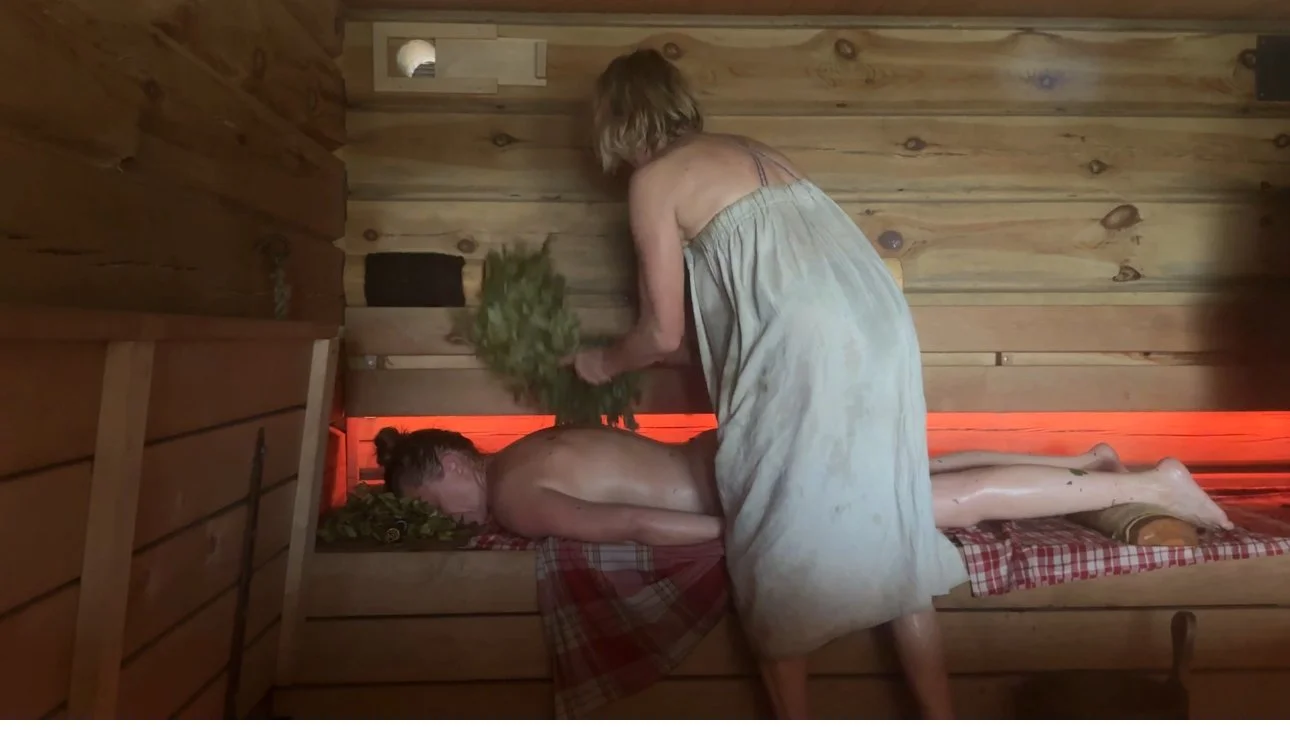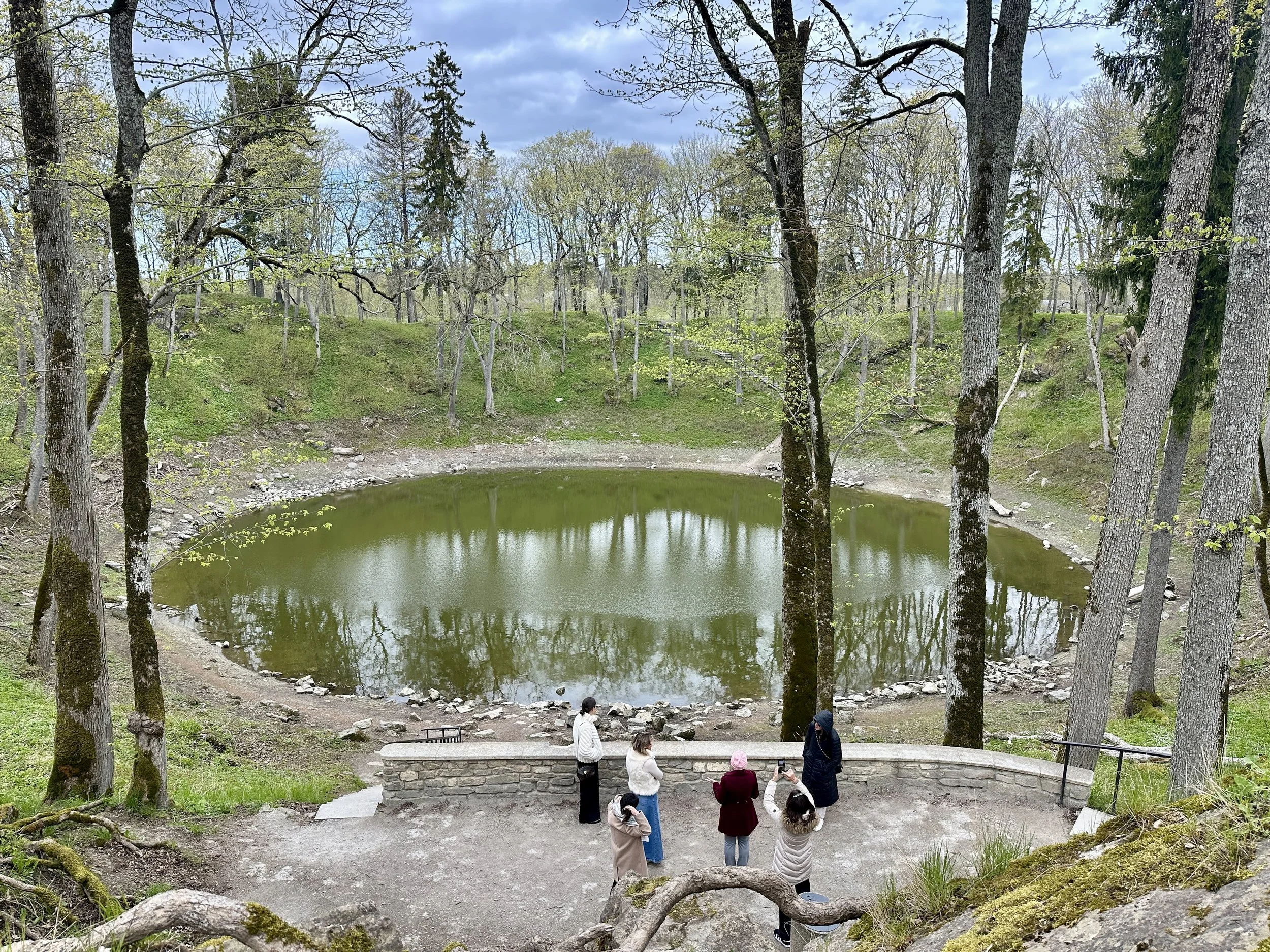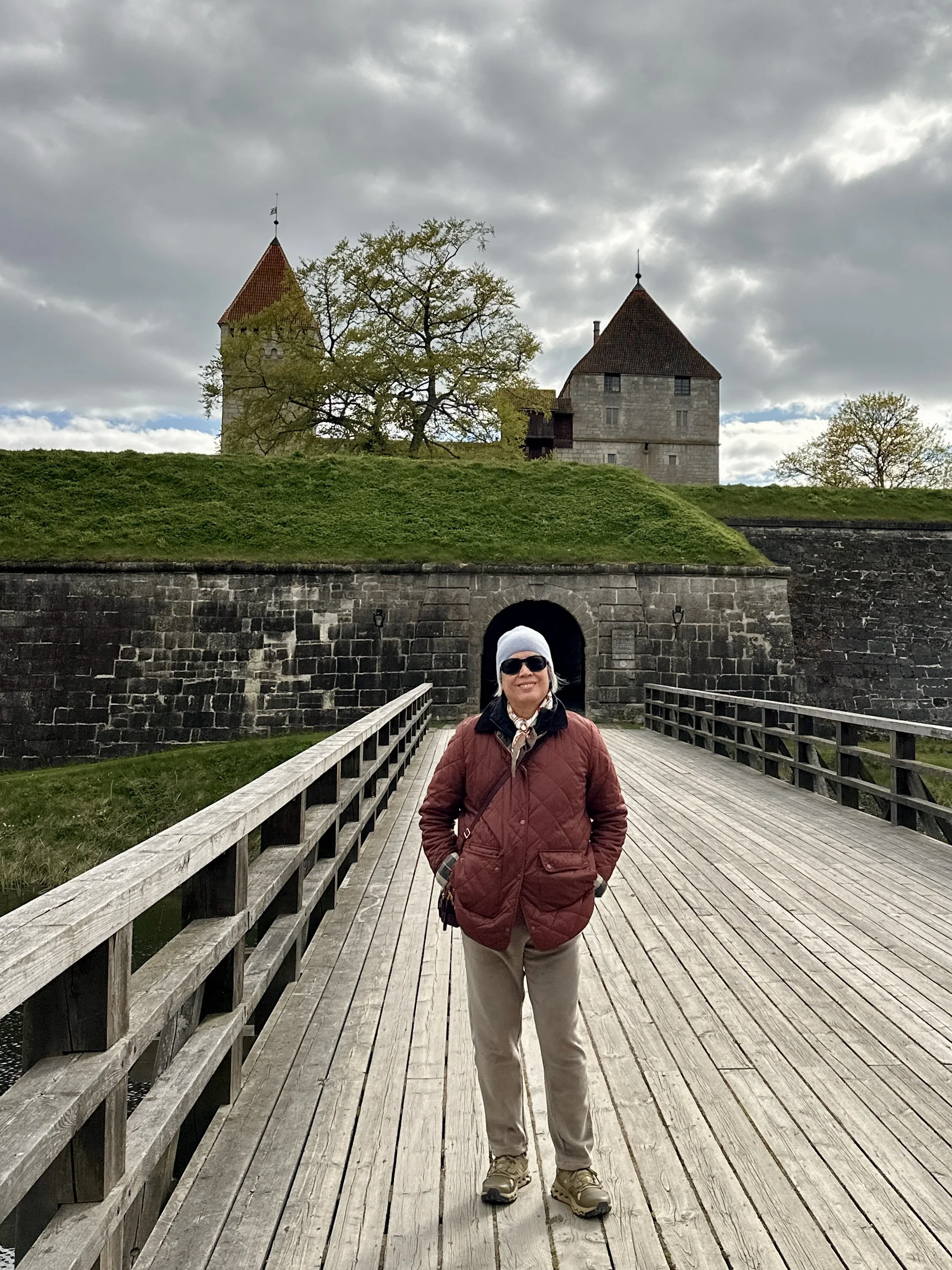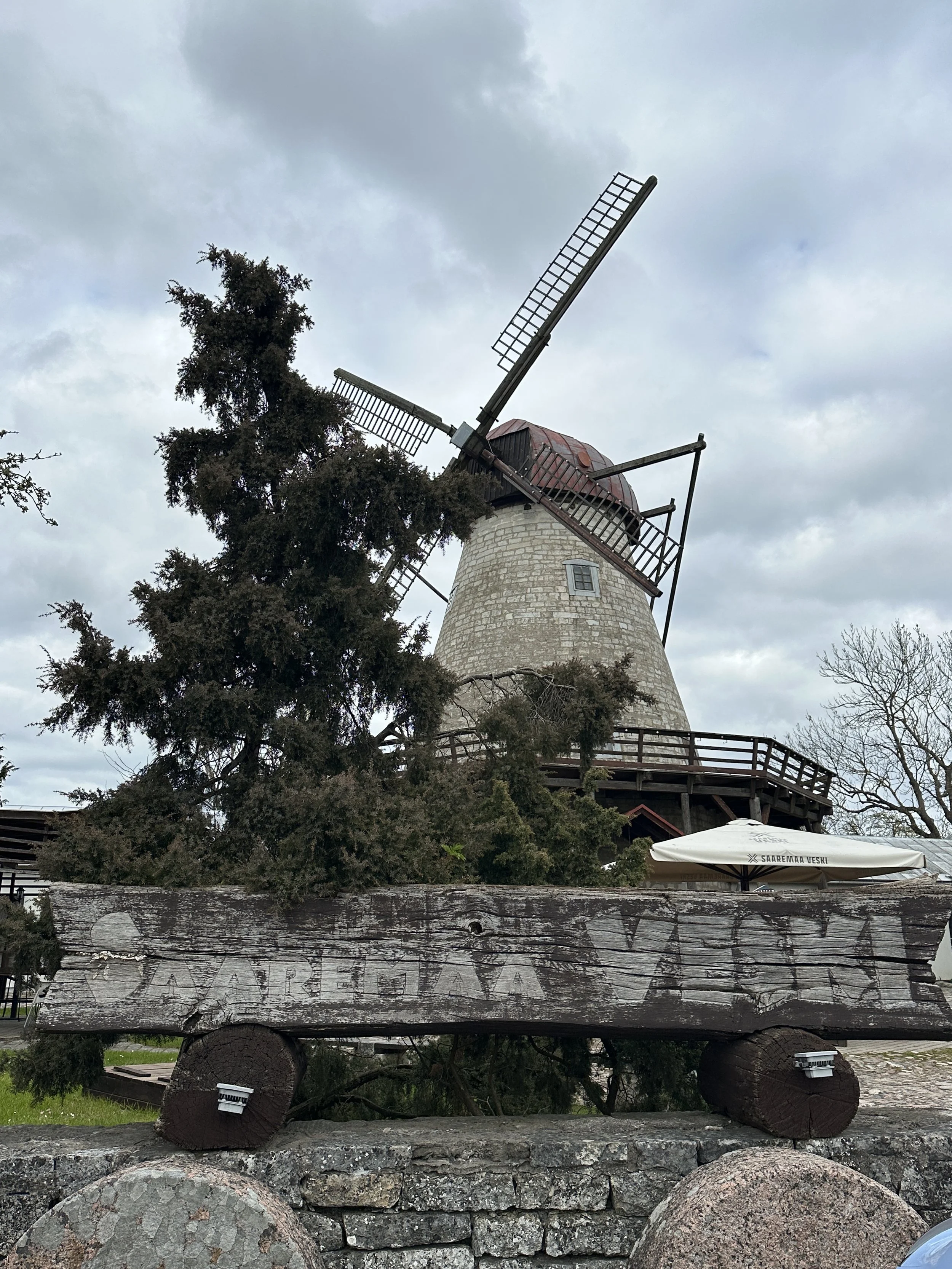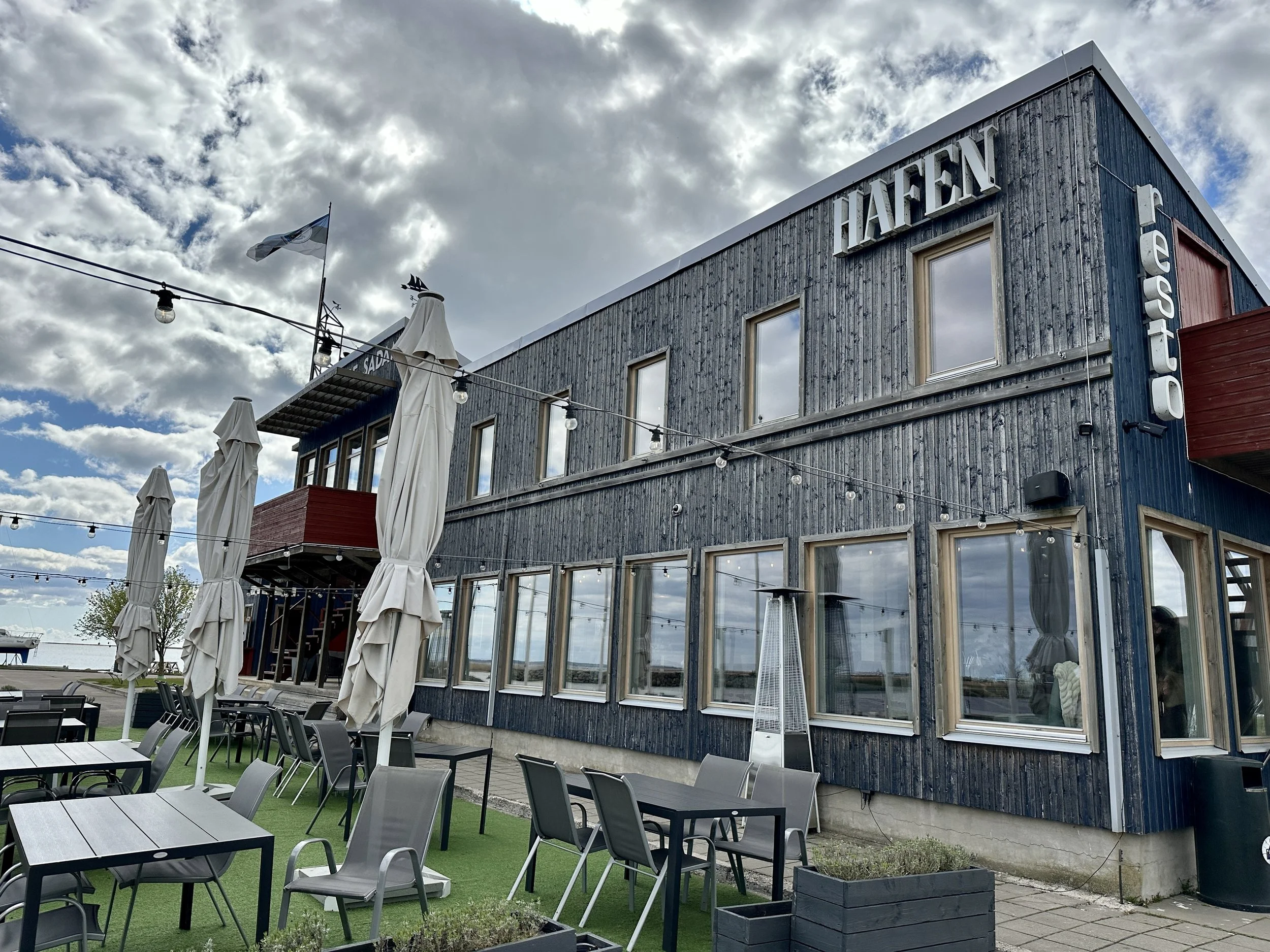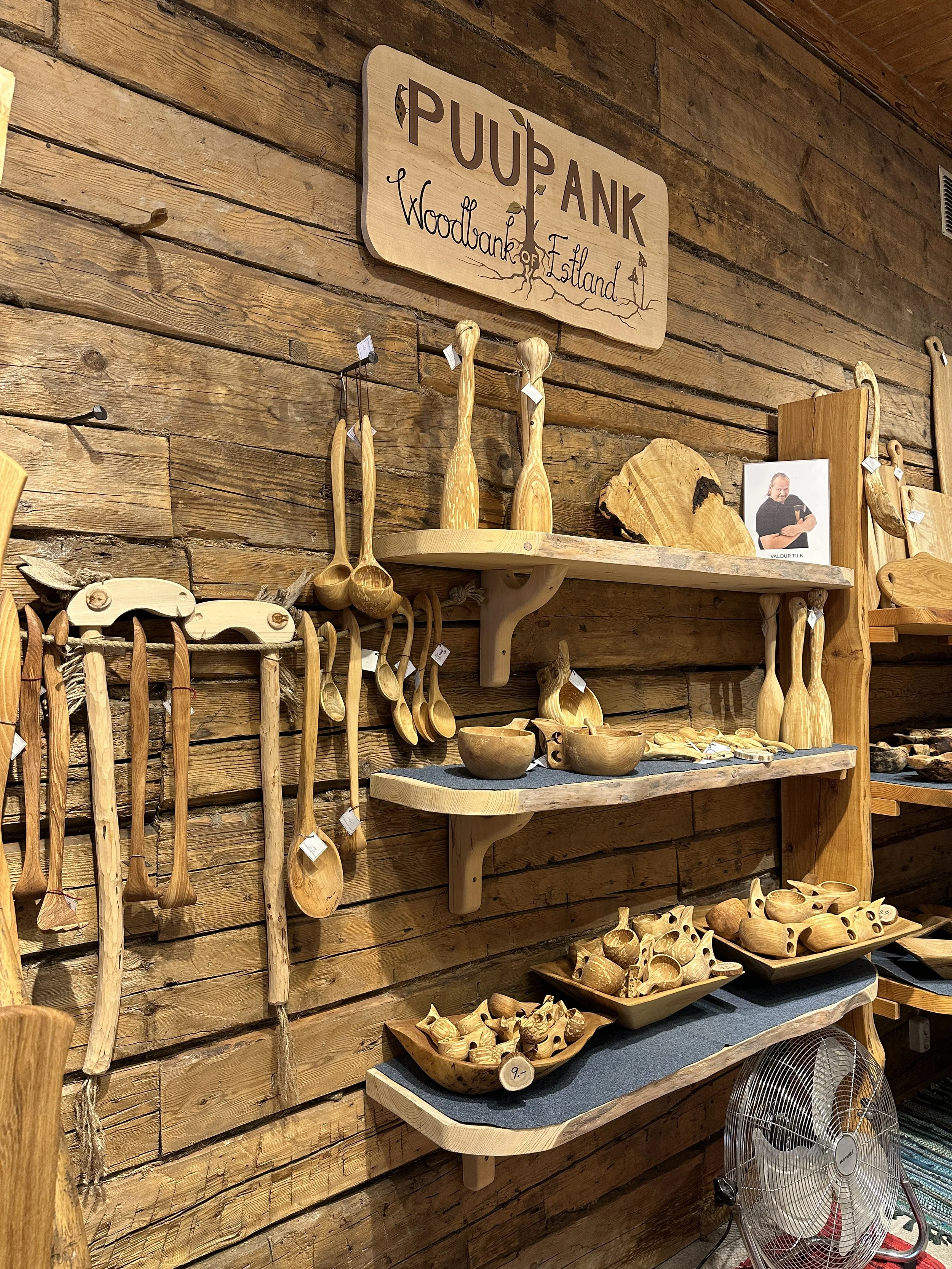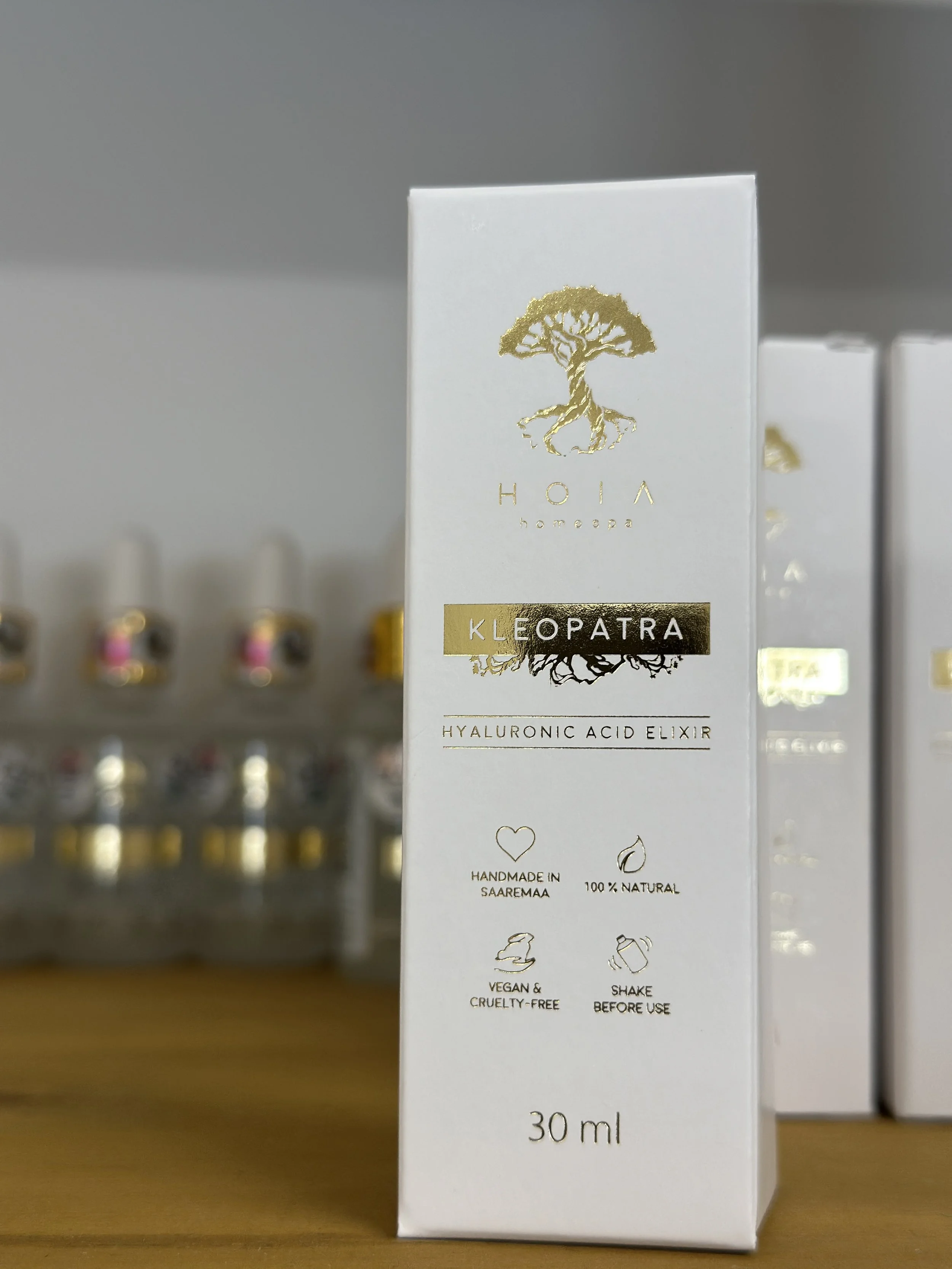On my third trip to Estonia, I finally ventured beyond the storybook charm of Tallinn and traveled westward into a side of the country that felt like a whispered secret—untouched, timeless, and deeply restorative. With over 2,000 islands to its name, Estonia is far more than its cobbled capital. This time, I explored the serene, pine-scented landscapes of Muhu and Saaremaa—where time slows, juniper scents the air, and the rhythm of life is guided by nature and tradition.
A Little Background
Estonia sits on the edge of the Baltic Sea, bordered by Russia and Finland, and boasts a history as rich as its forests are deep. Gaining independence from the Soviet Union in 1991, it has since emerged as one of the world’s most digitally advanced societies. But for all its innovation, what strikes me most is how Estonians have managed to preserve an old-world magic—especially on the islands.
Getting to Tallinn
Getting to Estonia is easier than you might think. I flew with Finnair via Helsinki, which offers smooth connections to Tallinn—just a quick 30-minute flight away. You can also reach Tallinn by ferry from Helsinki, which makes it a perfect twin-city itinerary for those wanting to pair Estonia with Finland.
From Tallinn’s Timelessness…
Tallinn’s Old Town, with its fairytale spires, winding cobbled streets, and lively squares, is where most travelers begin—and inevitably fall under its spell. On past visits, I strolled the manicured gardens of Kadriorg Palace. This time, I delved deeper into Estonia’s contemporary art scene with visits to KUMU, the country’s premier art museum, and POCO, a striking black-box gallery dedicated to Pop Art. I also explored Noblessner, a once-industrial port now transformed into a vibrant creative district, where waterfront galleries, stylish bistros, and natural wine bars capture the pulse of modern Tallinn. Another highlight was Telliskivi Creative City, a former factory complex turned cultural hotspot, buzzing with design shops, art studios, street murals, and some of the city’s most exciting food and drink spots.
KUMU Museum
PoCo Museum
Noblessner
Telliskivi Creative City
Where to Eat in Tallinn:
ART Priori – A jewel in the Old Town with refined Estonian cuisine and striking design.
Shang Shi at The Burman Hotel – Exclusive Cantonese dining experience in a theatrical setting.
Controvento – A cozy Italian hideaway, perfect for a comforting pasta fix.
38 – A pop-up dining experience that captures Tallinn’s culinary edge.
Aarde Pagar Bakery – A hidden gem for breakfast or a unique 10-course open-faced sandwich tasting menu, perfectly paired with Estonian vodka.
LORE Bistroo – A vibrant waterfront spot in Noblessner serving elevated comfort food with a Nordic twist and a great selection of local wines and craft cocktails.
Where to Stay:
Schlossle Hotel – Intimate, elegant, and tucked away from the crowds.
Telegraaf Hotel – Classic luxury in the heart of the Old Town.
The Burman – A stylish newcomer as of March 2025, housed in a restored 15th-century merchant’s house. With only 17 sumptuous rooms, its modern glamour and in-house casino, The Bombay Club, add a twist to the traditional.
…To Island Escapes on Muhu and Saaremaa
Leaving the capital, we traveled to Muhu Island, Estonia’s third largest. Known for its 52 villages, ancient windmills, and vibrant folk culture, the island is a haven for slow, soulful travel. We stayed at Pädaste Manor, a Small Luxury Hotel gem where understated elegance meets Nordic island life. One of the most memorable moments of our stay was experiencing their traditional Estonian smoked sauna—a deeply restorative ritual where fragrant woodsmoke, intense heat, and cool plunges come together to calm the body and quiet the mind. Another highlight was our visit to Kaali Crater, a rare meteorite impact site thought to be over 4,000 years old. From cosmic wonders to spa rituals rooted in centuries-old tradition, Muhu offered a profound sense of place and serenity.
Kaali Crater
We continued to Saaremaa, Estonia’s largest island, where windmills spin on coastal plains and pine forests hum with quietude. The landscape is dotted with bogs, berry patches, and limestone cliffs—soul-soothing terrain for slow travelers. A standout stop was Kuressaare Castle, a remarkably well-preserved 14th-century fortress surrounded by a moat and leafy parklands. Originally built by the Livonian Order, it now houses the Saaremaa Museum and offers insight into the island’s layered history—from medieval times through Soviet occupation. Climbing its towers and walking the ramparts offered not only panoramic views but also a sense of Estonia’s enduring resilience.
Island Highlights:
Cycling through sleepy fishing villages
Visiting ancient windmills and medieval churches
Wandering the wild beaches and bogs of Vilsandi National Park
Enjoying sauna culture and spa rituals
Island Dining:
Alexander Restaurant at Pädaste Manor, Muhu – A celebration of Nordic island cuisine in a refined, candlelit setting.
Resto Hafen, Saaremaa – Casual and convivial with a harborside view and fresh seafood.
What to Buy & Bring Home from Estonia
One of the joys of traveling in Estonia is discovering local craftsmanship and beautifully made products that reflect the land’s purity and creativity. Here are my favorite Estonian finds worth packing in your suitcase:
Hand-Carved Wooden Goods from PUUPANK – Tucked in Master's Courtyard in Old Town Tallinn, this shop specializes in artisanal woodwork. I always pick up their hand-carved shoe horns and cutting boards—simple, functional, and deeply Estonian.
Butter from Saaremaa – Yes, butter! Saaremaa’s dairy is revered for its high butterfat content and creamy flavor. Buy a block for breakfast or pastries—it’s worth checking a cooler bag.
KALEV Chocolates – Estonia’s beloved chocolate brand since 1806, offering a wide variety of traditional and modern sweets. Their marzipan and nut-filled bars are nostalgic and giftable.
HOIA Skincare – Handmade in Muhu Island, this all-natural line is produced in limited batches. I recommend the Peat Mask, Kleopatra Supercharged Serum, and Super Firming Eye Serum. Nature in a bottle.
Dark Rye Bread from Muhu – Dense, slightly sweet, and baked with heritage grains, this traditional bread is a taste of the island’s soul.
Final Thoughts
Estonia continues to draw me in with its contrasts: modern yet deeply rooted, compact yet quietly vast. Whether you’re sipping coffee in a Tallinn courtyard or walking barefoot along a Saaremaa beach, it offers space—to think, to breathe, and to just be.
If you've only seen Tallinn, there's so much more waiting to be explored. Estonia’s islands invite you to experience nature, nourishment, and stillness in a way that stays with you long after you've left.
Ready to plan your own Estonian escape—from Tallinn to the tranquil islands? Let’s start your journey.

